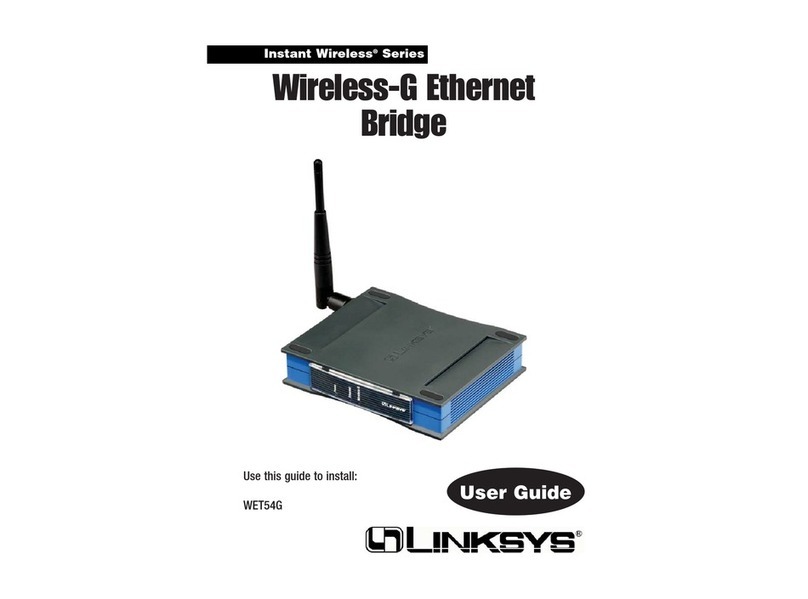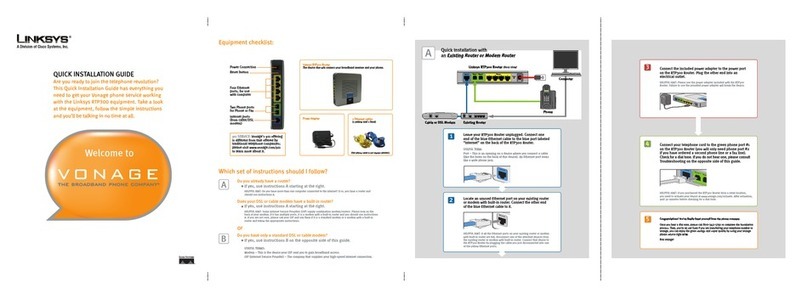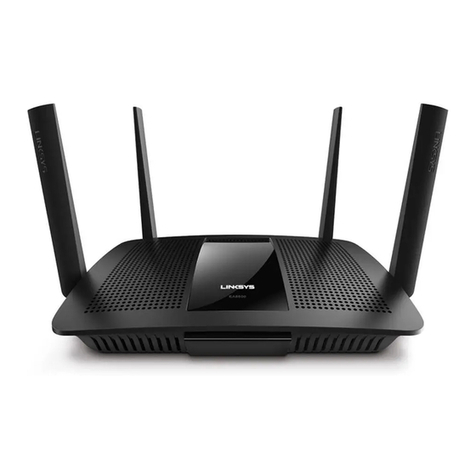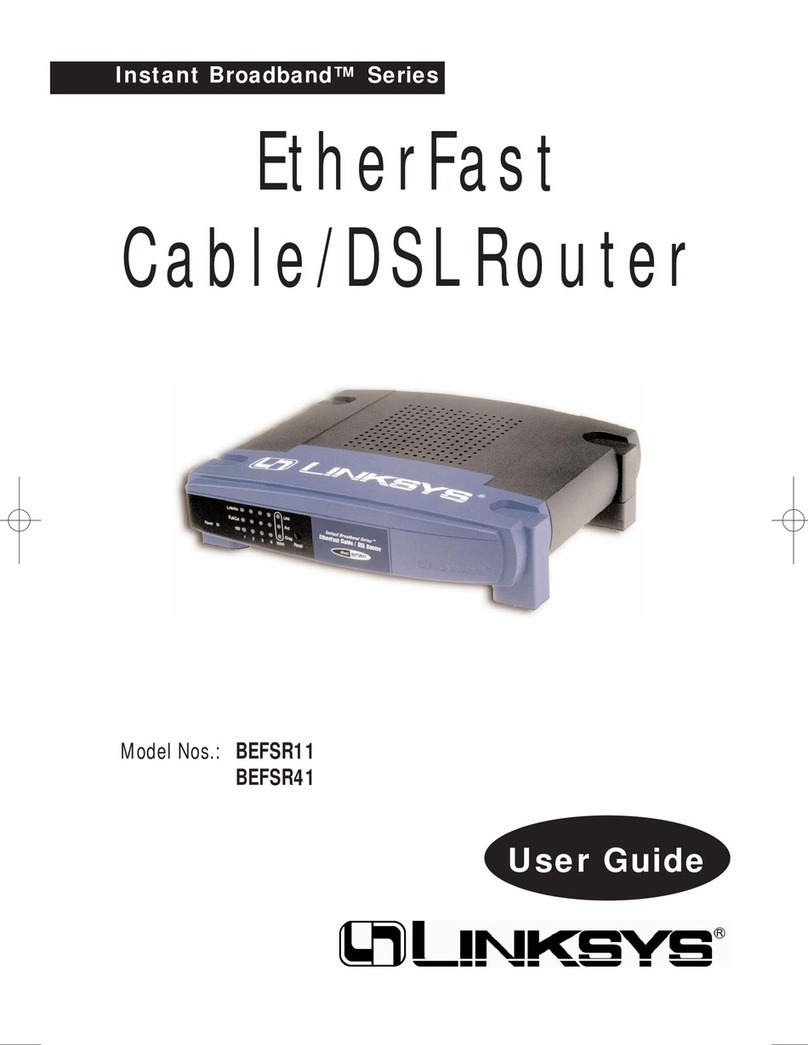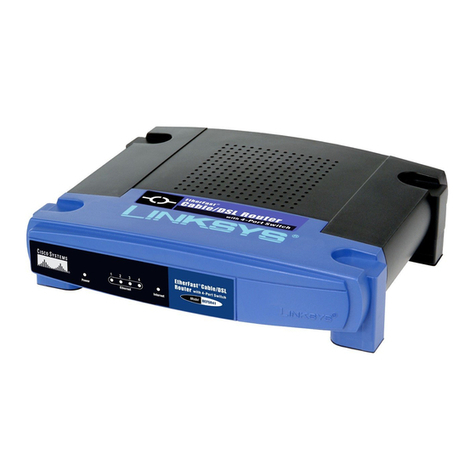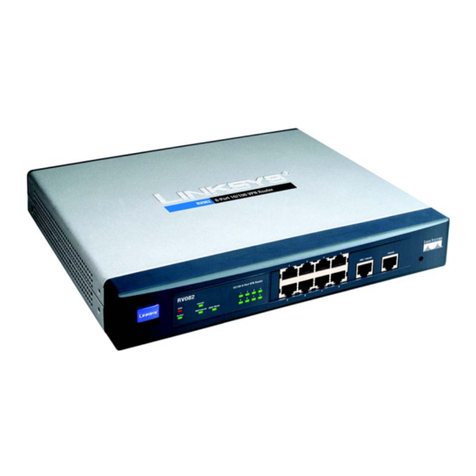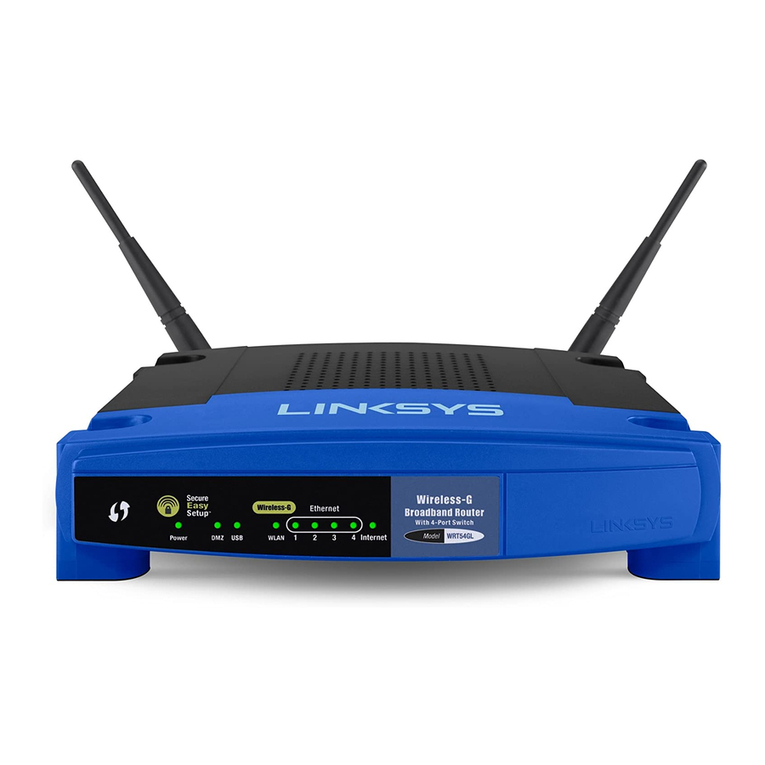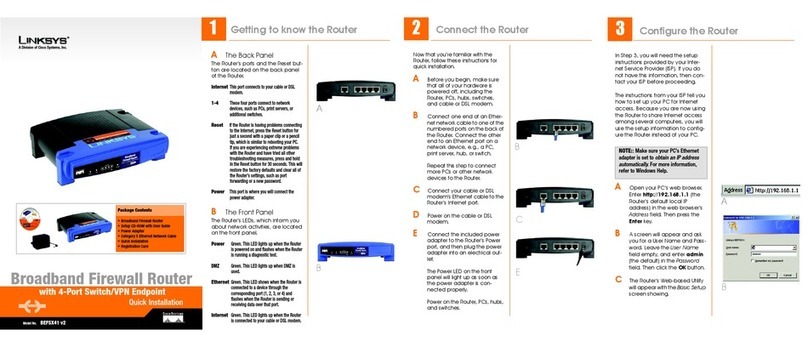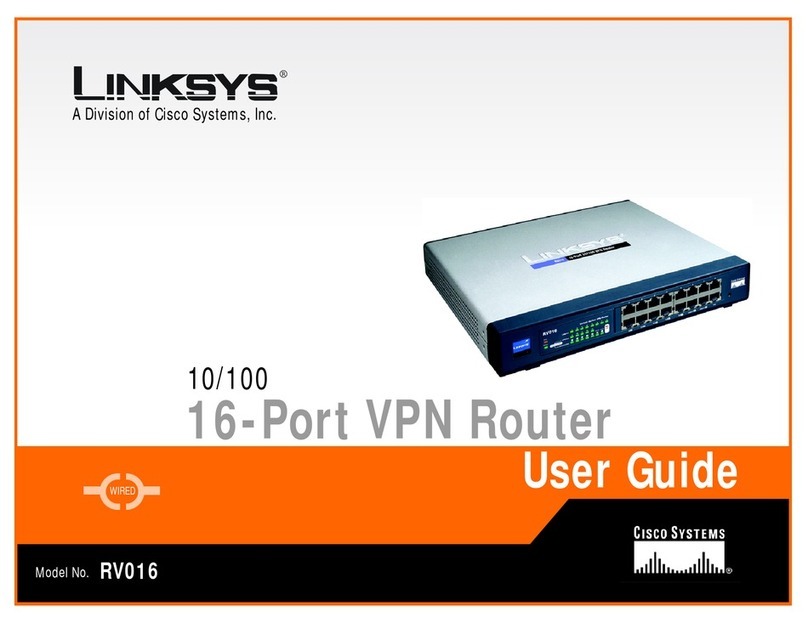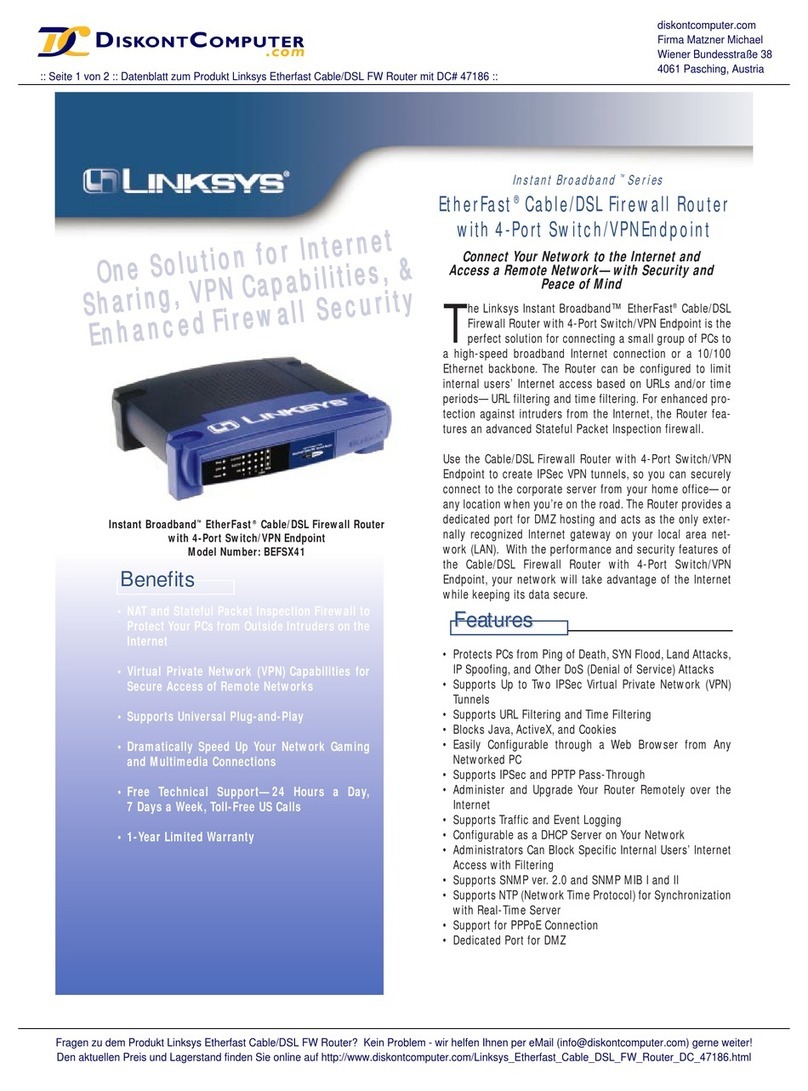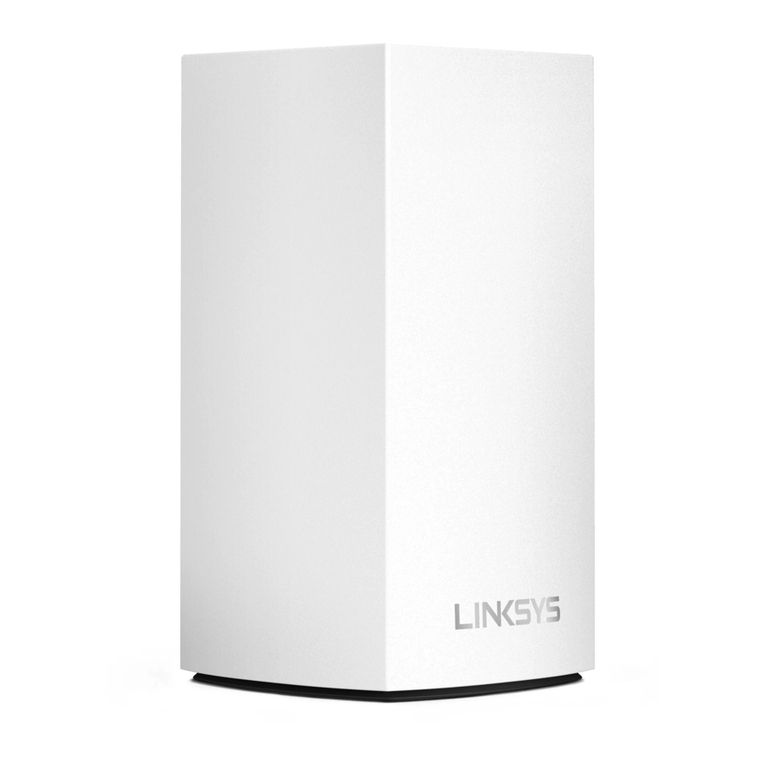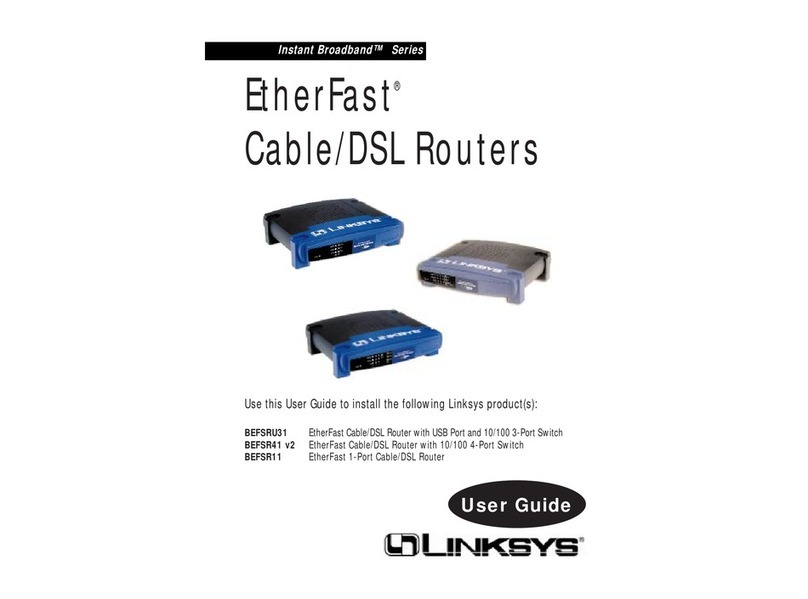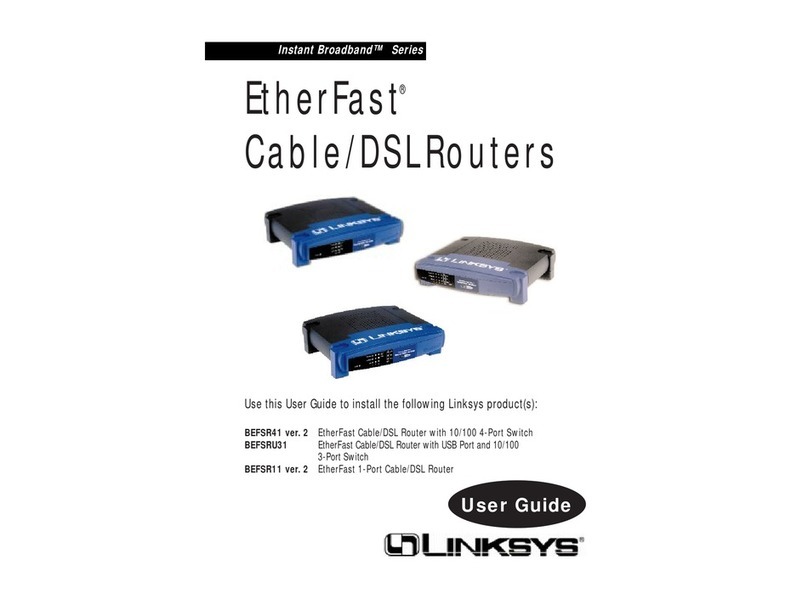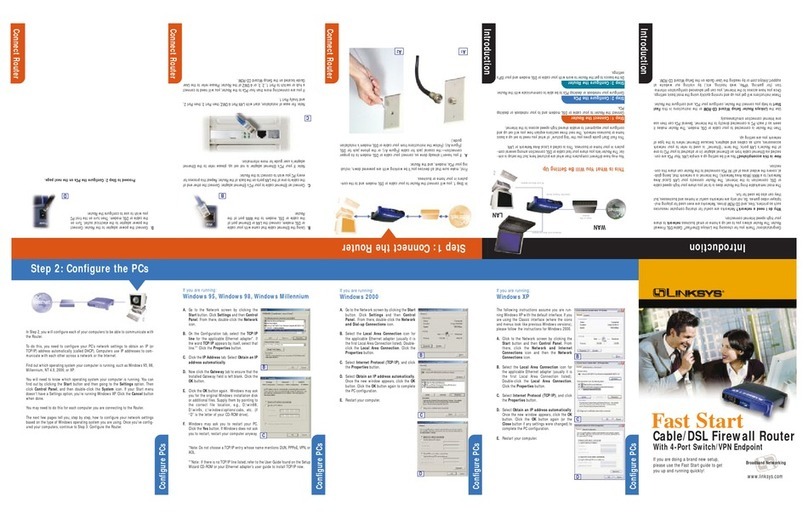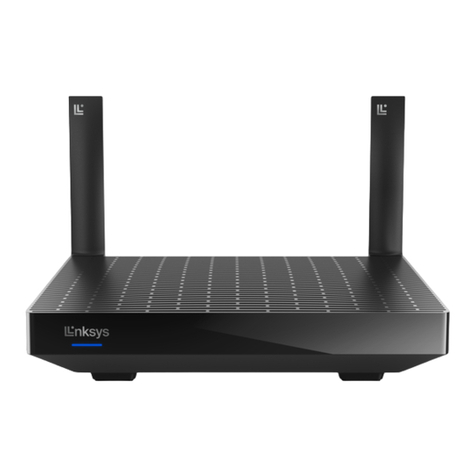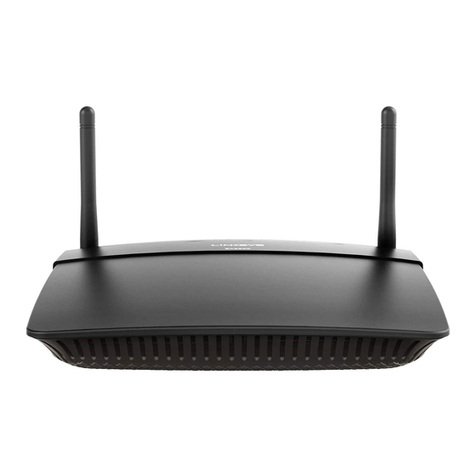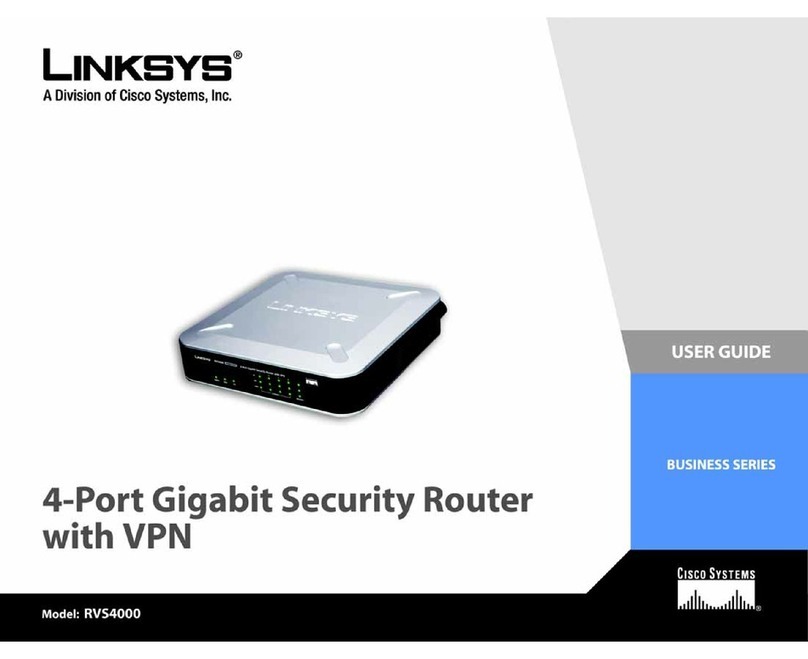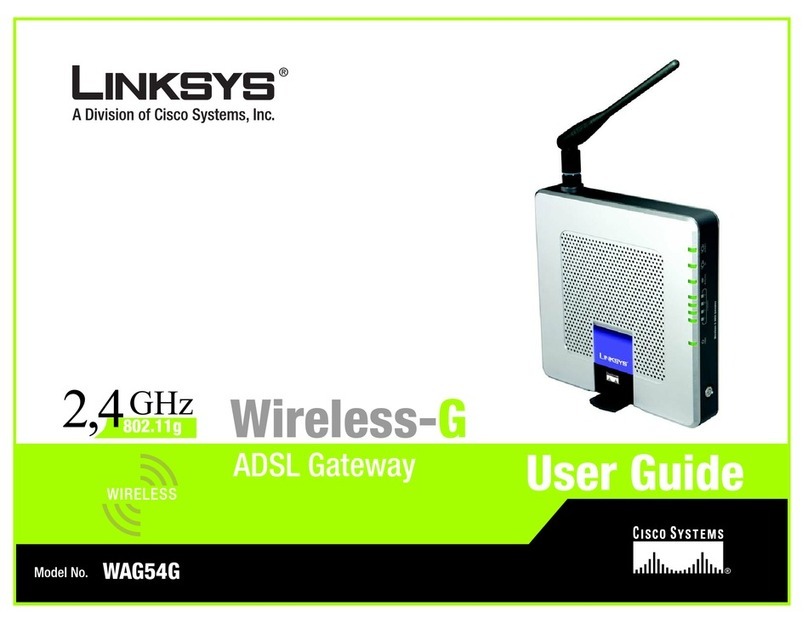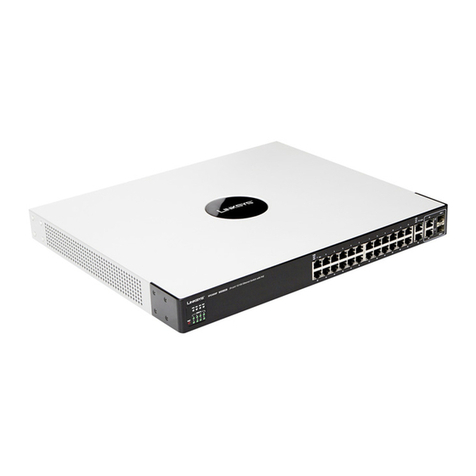CHAPTER 2 System Status
Linksys
5
RMON
The Statistics page displays detailed information regarding packet sizes and
information regarding physical layer errors. The information displayed is
according to the RMON (Remote Network Monitoring) standard. An oversized
packet is defined as an Ethernet frame with the following criteria:
•Packet length is greater than MRU byte size.
•Collision event has not been detected.
•Late collision event has not been detected.
•Received (Rx) error event has not been detected.
•Packet has a valid CRC.
To view RMON statistics and/or set the refresh rate, do the following:
STEP 1 Click System Status > RMON > Statistics.
STEP 2 Select the Interface for which statistics are to be displayed.
STEP 3 Select the Refresh Rate, the time period that passes before the interface
statistics are refreshed.
The statistics are displayed for the selected interface.
•Bytes Received—Number of octets received, including bad packets and FCS
octets, but excluding framing bits.
•Drop Events—Number of packets dropped.
•Packets Received—Number of good packets received, including Multicast
and Broadcast packets.
•Broadcast Packets Received—Number of good Broadcast packets received.
This number does not include Multicast packets.
•Multicast Packets Received—Number of good Multicast packets received.
•CRC & Align Errors—Number of CRC and Align errors that have occurred.
•Undersize Packets—Number of undersized packets (less than 64 octets)
received.
•Oversize Packets—Number of oversized packets (over 2000 octets) received.
•Fragments—Number of fragments (packets with less than 64 octets,
excluding framing bits, but including Frame Check Sequence octets)
received.
•Jabbers—Total number received packets that were longer than 1632
octets. This number excludes frame bits, but includes FCS octets that had
either a bad FCS with an integral number of octets (FCS Error) or a bad FCS
with a non-integral octet (Alignment Error) number. A jabber packet is
defined as an Ethernet frame that satisfies the following criteria:
•Packet data length is greater than MRU.
•Packet has an invalid CRC.
•Received (Rx) Error Event has not been detected.
•Collisions—Number of collisions received. If Jumbo Frames are enabled,
the threshold of Jabber Frames is raised to the maximum size of Jumbo
Frames.
•Frames of 64 Bytes—Number of frames, containing 64 bytes that were
received.
•Frames of 65 to 127 Bytes—Number of frames, containing 65-127 bytes
that were received.
•Frames of 128 to 255 Bytes—Number of frames, containing 128-255 bytes
that were received.
•Frames of 256 to 511 Bytes—Number of frames, containing 256-511 bytes
that were received.
•Frames of 512 to 1023 Bytes—Number of frames, containing 512-1023
bytes that were received.
•Packets of 1024 and More Bytes—Number of frames, containing 1024-
2000 bytes, and Jumbo Frames, that were received.
To clear or view statistics counters, do the following:
•Click Refresh to refresh the counters on the page.
•Click Clear to clear the selected interfaces counters.
•Click View All to see all ports on a single page.
Interface Statistics
The Interface Statistics page displays traffic statistics per port. The refresh rate of
the information can be selected.
This page is useful for analyzing the amount of traffic that is both sent and
received and its dispersion (Unicast, Multicast, and Broadcast).
